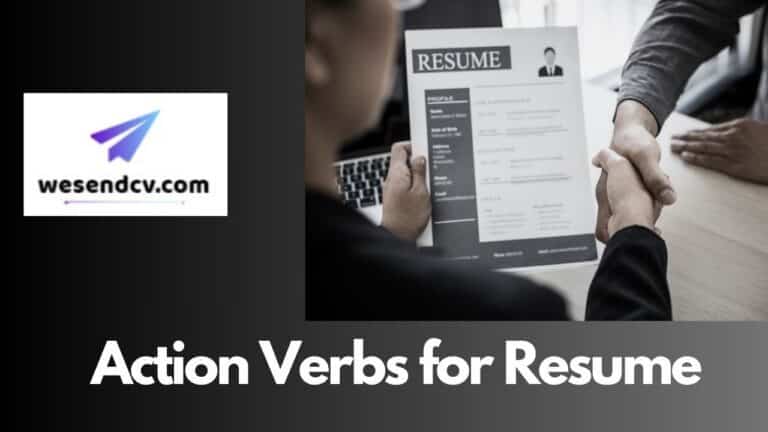A resume is an essential tool in the job search process, as it provides a structured overview of a person’s academic background, professional experience, skills, and accomplishments. In this article, we’ll explore how to craft an effective resume in Spanish, tailored to the current expectations of employers in 2025.
Main Highlights of Content
ToggleWhat Is a Resume?
The term “currículum vitae” (CV) is Latin for “course of life.” It is a document that outlines an individual’s education, work history, qualifications, and other relevant information. Its main purpose is to highlight a candidate’s suitability for a particular job.
Basic Structure of a Resume in Spanish
A well-structured resume helps recruiters quickly understand your background and qualifications. Below are the key sections commonly included in Spanish-language resumes:
1. Personal Information
Include your full name, phone number, email address, and optionally your physical address and links to professional profiles like LinkedIn.
2. Professional Summary
This is a short paragraph summarizing your experience, core skills, and career goals. It should be tailored to each job application and written clearly and concisely.
3. Work Experience
List your previous roles in reverse chronological order, including the company name, job title, start and end dates, and a short description of your responsibilities and accomplishments.
4. Academic Background
Detail your educational history by listing degrees earned, institutions attended, and relevant dates. Mention academic achievements where appropriate.
5. Skills
Include a list of both technical and soft skills that are relevant to the position. These might include language proficiency, software knowledge, communication, leadership, or problem-solving abilities.
6. Additional Information
Here you can include certifications, training courses, awards, volunteer work, publications, or any other relevant details that strengthen your candidacy.
Tips for Writing an Effective Resume
Tailor It to Each Job
Customize your resume for every job application by highlighting the experience and skills most relevant to the specific role and industry.
Use Keywords
Incorporate industry-specific keywords and job-related terminology. Many companies use applicant tracking systems (ATS) that scan resumes for specific phrases.
Be Clear and Concise
Avoid long paragraphs. Use bullet points to list your responsibilities and achievements. Aim to keep your resume to one or two pages at most.
Keep the Design Professional
Choose a clean and simple layout with easy-to-read fonts. Avoid excessive colors or graphics. Always save and send your resume as a PDF to preserve the formatting.
Proofread for Errors
Grammar and spelling mistakes can create a poor impression. Carefully review your resume or have someone else check it before submitting.
Common Resume Formats
There are different formats to choose from, depending on your background and the role you’re targeting:
- Reverse Chronological Format: Lists your most recent experience first. Ideal if you have a steady work history.
- Functional Format: Focuses on skills rather than experience. Useful for recent graduates or those changing careers.
- Combination Format: A blend of chronological and functional, this format highlights both skills and work experience.
Cultural Considerations When Writing a Resume in Spanish
If you’re applying for a job in a Spanish-speaking country, there are some cultural expectations to consider:
- Include a professional photo if it’s customary in that country (e.g., Spain, Mexico, Argentina).
- Formality in language is important; avoid slang or overly casual expressions.
- Use regional spelling and terminology based on the country where you’re applying.
Resume Writing for Beginners
If you’re writing your first resume or don’t have much experience, here’s how to get started:
- Focus on academic achievements, extracurricular activities, and any internships or volunteer roles.
- Include transferable skills such as time management, teamwork, and communication.
- Make sure to show enthusiasm and a willingness to learn.
Additional Tips
- Add measurable achievements: Rather than just saying “responsible for managing projects,” write “managed five projects that improved team efficiency by 20%.”
- Keep your resume updated regularly, especially if you’re continuously learning new skills or taking on new responsibilities.
- Consider adding a short section on languages spoken, especially if applying to international roles.
Resume Trends in 2025
As of 2025, employers are looking for candidates who can demonstrate:
- Digital literacy and comfort with remote tools.
- Adaptability and problem-solving skills.
- Relevant technical skills and certifications.
- Real-world impact through results and achievements.
Make sure your resume reflects not only what you’ve done, but the value you brought to your previous roles.
Final Thoughts
Writing a professional resume in Spanish requires clarity, structure, and relevance. By organizing your resume effectively and tailoring it to the job you’re targeting, you increase your chances of standing out to recruiters.
Whether you’re applying in Spain, Latin America, or simply need a resume in Spanish for international job opportunities, following the guidelines in this article will help you create a compelling and competitive document.
Remember, a great resume doesn’t just list what you’ve done — it communicates what you can do for your next employer. Stay current, be precise, and always present yourself in the best light possible.







